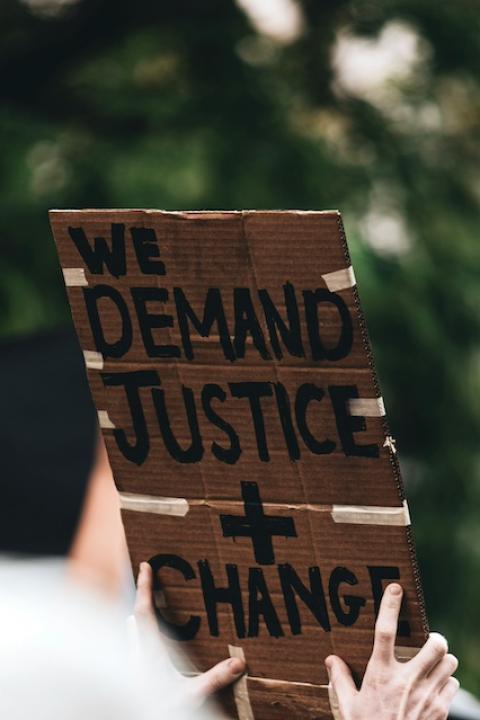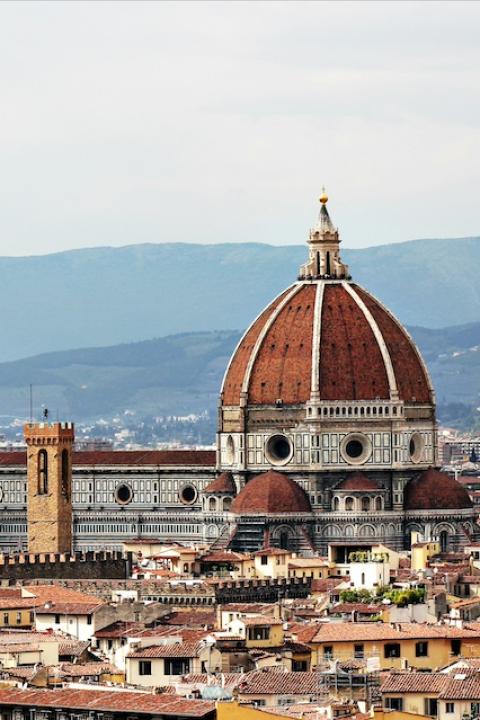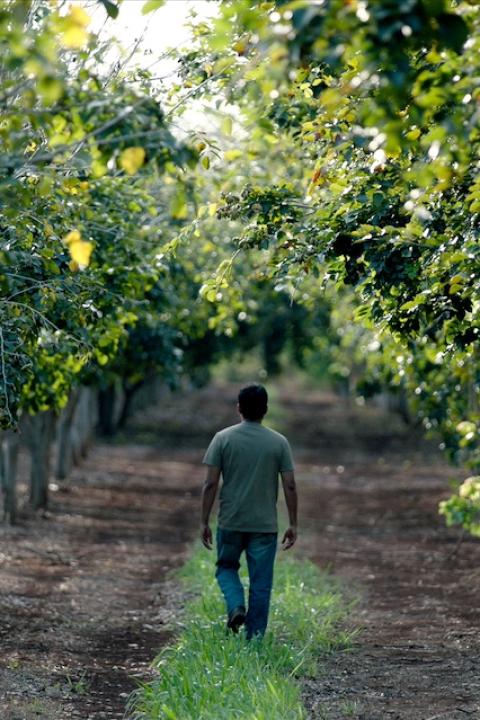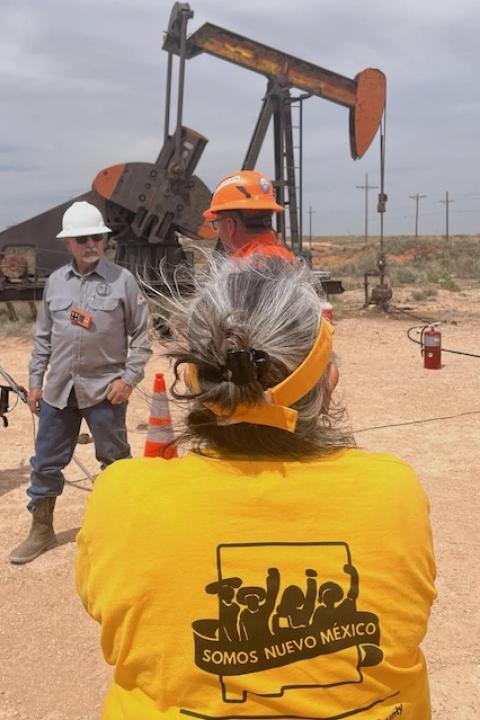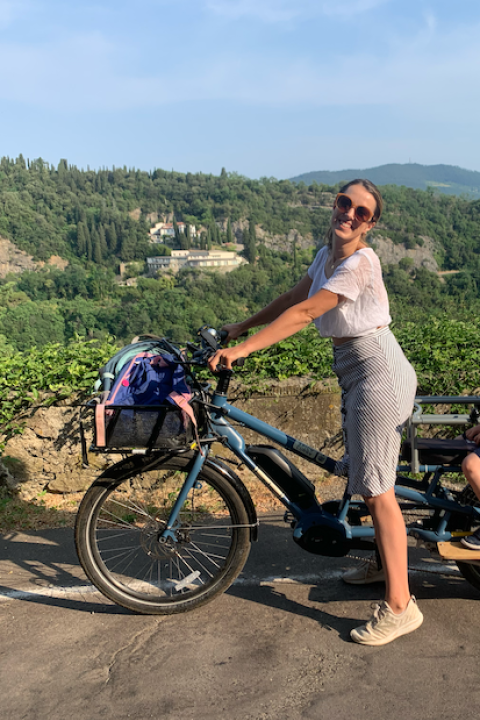
(Image: Erik Witsoe/Unsplash)
The field of sustainable living casts a wide net and raises many questions. First and foremost is whether or not it makes a difference. After all, if you invest in a new water-saving toilet and your neighbor expands their two-bedroom starter home to a five-bedroom, six-bath mansion, where is the impact?
The answer is simple. Sustainable living makes a big difference to the person who practices it. That is the impact.
Take me, for example. The neighbor conundrum happened to me, only it did not involve a neighbor. When I moved from a small apartment in a city to a house in the suburbs, my no-car, small footprint, energy-efficient lifestyle exploded into two cars and my own in-ground oil tank, among other routine features of raising children in a single-family suburban home.
Year by year, ways to lessen the blow began to emerge. Replacing a 50-year-old, 35 percent energy-efficient oil furnace with a 95 percent efficient gas system was a good start, along with a new set of double-pane windows.
Joining my town’s environmental commission, connecting with the local Democratic Party organization to help environment-wise candidates campaign for office, and giving public workshops on creating art with recycled materials also enabled me to participate in community-wide conversations about sustainable living choices. Community engagement is not simply a box to check on a to-do list. It fosters life-long social connections and support networks, adding to the enjoyment of community life and personal well-being.
A similar principle applies to sustainable choices made in the home. They open up a chance to enjoy parts of an ordinary day that would otherwise go unnoticed or unattended. To the extent that sustainable living also reduces utility bills and other expenses, that’s icing on the green cake. Here are some of the ways that sustainable living adds to my enjoyment of life.
Home heating
I love winter. I love bulky sweaters, scarves, slippers and housecoats. And hats. I love bundling up with grandma’s crochet blanket on the couch to watch TV, and I love a thick layer of quilts on the bed at night. Because I love all of these things, I keep the temperature in my home fairly low during cold weather. If you are not a fan of this choice, that’s okay. You can try something else.
Air-drying laundry
My gas-powered clothes dryer is a real energy hog, but I used it all the time until I read an article about preserving the lifespan of blue jeans by air-drying them. At first, I only air-dried jeans, towels and other heavy items. After a while, it seemed just as easy to air-dry entire loads.
Hanging everything up piece by piece takes time, and that’s okay. I use that time to relax from a hectic day and catch up with my favorite radio programs. Podcasts and audiobooks are other options.
Using alternative transportation
When my family was young and my work commute required a car, I was dashing back and forth in the car all day every day, and into the evening. Nowadays it’s different. I have enough free time to enjoy a 40-minute round-trip walk into town for errands. Walking is an exercise session and I save on parking fees, too.
Rediscovering local mass transit options is another lifestyle enhancement because that’s the time I get to read a book without interruption. I get much more reading done now than ever before, even though trip planning can sometimes be a hassle especially when a train gets stuck.
Yard care
Yard care is another choice that varies widely according to circumstance and personal inclination.
Choosing not to use a gas-powered lawn mower or apply chemicals to my new suburban lawn was an easy choice for me. When weeds began to take over parts of the grass, I replaced them with beds of hostas, daffodils and other easy-care perennials. Existing forsythia bushes and English ivy were also allowed to run rampant.
On the downside, hostas, daffodils, English ivy, and forsythia are not native to the United States, and they are not particularly friendly to pollinators. A more sustainable choice would have been replacing weedy parts of the lawn with native wildflowers. Eventually, I ripped out the non-native beds, threw down some wildflower seeds, and invested in a few wildflower seedlings from the local nursery.
With the non-native plants out of the way, volunteer tree species also began to appear, including locusts and sassafras. The sassafras in particular were a big thrill that triggered childhood memories with their deliciously fragrant leaves. Last year I added a pair of pawpaw saplings just to see how they would do, too.
My yard looks dreary all winter but that’s nature for you. The reward is a lively display of birds, bees and butterflies beginning in early spring and lasting into the fall, along with the occasional visitor in search of spare seeds during the winter.
No buying new
I love hunting through thrift shops for buried treasure, so buying second-hand is another sustainability checkoff box that adds zest to my life.
Garage sales are another option, of course. My town established a formal freecycle schedule, where residents can drop off used goods and pick up something else without exchanging money.
The internet also opened up a wide field of second-hand buying opportunities, including no-buy clubs on social media and online marketplaces.
Cooking at home
Cooking at home is yet another sustainable living choice that varies widely according to circumstance. I love it, so I do it, and I compost my food waste.
Within the cooking space, energy-saving choices include avoiding the oven during summertime and cooking enough at one time to make meals with leftovers.
What else?
With the exception of the new furnace and windows, my sustainability choices have not involved any significant new investments. Nevertheless, solar panels, home energy storage, smart home systems, electric vehicles, and other new carbon-cutting technologies are becoming more affordable, and my neighbor across the street just cut down a huge old tree that was shading parts of my roof all day.
My next step is checking out the new tax credit for home solar panels under the 2022 Inflation Reduction Act. What’s yours?

Tina writes frequently for TriplePundit and other websites, with a focus on military, government and corporate sustainability, clean tech research and emerging energy technologies. She is a former Deputy Director of Public Affairs of the New York City Department of Environmental Protection, and author of books and articles on recycling and other conservation themes.






